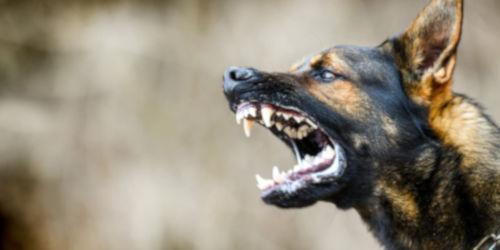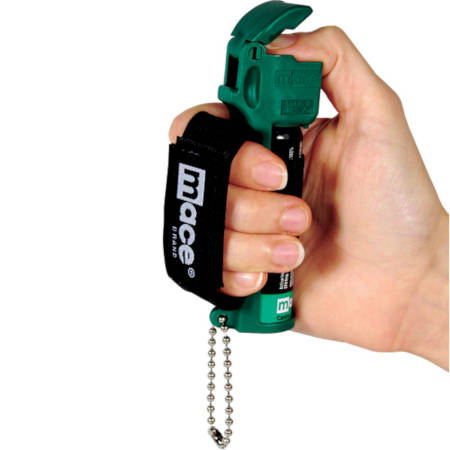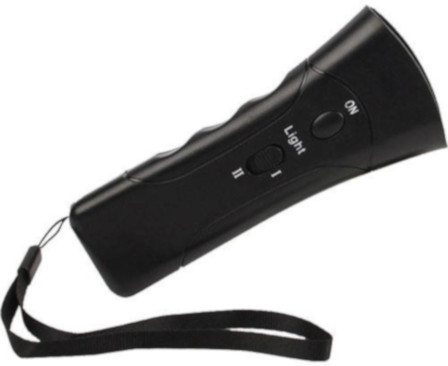How to Stop a Dog Attack

Understanding Dog Aggression
Dogs are our loyal companions, but they may show aggression when they feel threatened, excited, or protective. Understanding what triggers a dog's aggressive behavior can help us avoid potential attacks and react appropriately in emergency situations.
One way to understand dog aggression is to put ourselves in their paws. Imagine walking into a dark alley, and suddenly a stranger jumps out of nowhere and runs towards you. You may feel scared, defensive, or even aggressive. Dogs may experience similar emotions when they encounter unfamiliar people or animals.
For example, my neighbor's dog used to bark and growl at me every time I walked by his yard. I assumed the dog was just territorial and ignored his warning signs until one day; he broke through the fence and attacked me. I learned that dogs may exhibit aggression as a result of fear rather than hostility.
However, not all cases of dog aggression are rooted in negative emotions like fear or anxiety. Some breeds have higher prey drive or protection instincts than others. While genetics is not an excuse for dangerous behavior, it's crucial to understand that some dogs may require more training and socialization than others to avoid conflicts with humans or other animals.
As such, learning to read a dog's body language is essential in preventing potential attacks. The next section will cover the common warning signs that a dog is showing aggressive behavior.
Identifying Aggressive Behaviors
Dogs are non-verbal communicators. They rely on their body language to signal how they feel about a situation or person. In general, dogs exhibit two types of aggressive behaviors: offensive and defensive.
Offensive aggression happens when the dog initiates an attack first. Common behaviors associated with offensive aggression include chasing after people or other animals, growling, barking, and showing teeth.
Defensive aggression, on the other hand, occurs when the dog feels trapped or cornered. Imagine someone pushing you against a wall; you may feel compelled to defend yourself by pushing back. Dogs exhibit similar defensive behaviors such as backing away, cowering, or snapping when they perceive a threat.
For instance, when my friend's dog was recovering from surgery, she was in pain and did not want anyone to come near her. As much as we wanted to comfort her, the dog growled at us whenever we approached her bed. We respected her boundaries and gave her space until she felt better.
Other warning signs of potential dog aggression include stiff body posture, raised hackles (the fur on their back), dilated pupils, drooling excessively, and rapid panting. It's vital to observe these cues carefully and avoid engaging with dogs that exhibit aggressive behaviors.
In the next section, we will discuss common triggers for dog attacks to help you identify high-risk situations before they escalate into emergencies or injuries.
Common Triggers for Dog Attacks
Understanding the common triggers for dog attacks can help individuals avoid situations that may provoke an otherwise friendly pup. Dogs are often perceived as aggressive by people, but in reality, their aggression usually stems from a place of fear or protectiveness. Here are some common triggers for dog attacks:
- Physical Touch: Sudden physical contact with dogs like petting or hugging could cause anxiety and lead to aggressive behavior.
- Loud Noises: Sounds like thunder, fireworks, gunshots, or anything loud could cause fear and result in dogs becoming reactive.
- Lack of Socialization: When a dog is not exposed to different types of environments and people at a young age, it may develop fearful behavior.
- Territoriality: Dogs are known for their protectiveness over their territory, so if they feel threatened by someone entering their space, they may become aggressive.
- Pain or Illness: Dogs cannot communicate when they are feeling pain or unwell, so sometimes what may appear to be an attack is simply a reaction to discomfort.
It's important always to approach unfamiliar dogs with care and caution. If you notice a dog displaying any aggressive behaviors, it's best to remove yourself from the situation as quickly and calmly as possible.
Preventive Measures Against a Dog Attack
Prevention is better than cure when it comes to avoiding dog attacks. The following preventive measures can help ensure your safety while out and about:
Get to Know Your Neighbors and Their Pets: Building relationships with neighboring pets can help decrease future encounters with potentially dangerous dogs. You can do this by starting a conversation or offering to take them for a walk.
Be Aware of Your Surroundings: Always be on the lookout for stray dogs or unfamiliar dogs when walking around. Pay attention to signs like growling, raised hair and barking that indicate a dog may be feeling anxious or aggressive.
Avoid Eye Contact: Although direct eye contact helps establish trust and respect among humans, dogs perceive it quite differently. Dogs might think you're challenging them or invading their space when they make eye contact with you.
Carry Dog Repellent Spray: A dog repellent spray can help individuals feel more secure while on walks, hikes, or runs. It's easy to use, and it could save your life in the event of an attack.
MACE Muzzle Dog Repellent
Preventive measures against dog attacks are crucial for avoiding potentially dangerous interactions with dogs. Always remember that a little cautious interest and awareness can go a long way in keeping you and your loved ones safe from harm.
Building Relationships with Neighboring Dogs
Preventing dog attacks requires a collaborative effort between owners, neighbors, and local authorities. A community-wide approach can help foster a safe and harmonious environment for both people and dogs. One way to mitigate the risk of a dog attack is by building relationships with neighboring dogs.
Getting to know your neighbor's dogs can be beneficial in several ways. By establishing friendly relations with your neighbor's dog, you are showing it that you are not a threat, thereby reducing its likelihood of attacking you or your pet. Furthermore, by understanding the dog's personality and behavior, you will begin to recognize signs of aggression and be able to avoid potential conflicts.
It is crucial to note that approaching an unfamiliar dog can be dangerous, and you should always ask permission from the owner first. Additionally, ensure that the dog is comfortable around strangers before attempting any interactions. Offering treats or toys, such as a ball, as a means of building rapport between yourself and the neighboring dogs can be helpful.
In some cases, dogs may become protective of their territory and feel threatened by strangers approaching their homes. Therefore, if you need to visit an unfamiliar house within your neighborhood where a dog resides, consider contacting the owner ahead of time regarding the presence of their dog.
Self-Defense Techniques for Dog Attacks
Even if all preventive measures are taken, dog attacks may still occur. In such scenarios where escape isn't possible, learning self-defense techniques is key to protecting yourself from an imminent attack.
One strategy for defending yourself during a dog attack is using an object as a barrier between yourself and the dog or creating distance by using something non-threatening such as an umbrella or jacket to distract the animal from its aggressiveness.
Suppose there are no objects available; shielding oneself from the attack by curling into a fetal position on the ground covers the vital areas of the chest with your knees while using hands and arms defensively against bites. Once down, use your legs and feet to kick the dog out of your space or, if small enough, grab its collar or neck to stop him from biting.
Another defensive strategy is to use a dog repellent spray at the dog's face or body. Some options are pepper spray and citronella spray. However, note that sprays are less effective in windy conditions and may also temporarily disable you in close range.
Prevention is always better than cure, but sometimes a quick self-defense response can save your life during a dog attack. By learning the proper techniques and practicing them in advance, you'll be better prepared to handle an attack if it occurs.
Protecting Your Body and Vital Areas
In the event of a dog attack, it is essential to protect your body and vital areas from injury. Covering your neck, head, and throat with your arms or a jacket can significantly minimize the risk of severe bleeding or even death. A sturdy bag or backpack can protect your back from bites and scratches. Additionally, carrying a small stick, umbrella, or pepper spray can be an effective tool for deterring dogs.
If the dog starts biting your arm or leg, use it as a shield by pushing it further towards the dog's mouth to prevent deeper penetration. If possible, make sure that other parts of your body such as your face or torso are not vulnerable to attack. Remember that the force of a dog's bite depends on its size and strength, so it's better to prevent any bites at all costs.
Training in martial arts or self-defense techniques can also help minimize the risk of serious injury during a dog attack. These techniques can provide you with skills like evading attacks and disabling the dog's jaws without causing permanent damage to the animal. However, these techniques require practice and should only be used as a last resort.
Similar to how boxers protect themselves with gloves and helmets in fights, you must also have protective gear in case you're attacked by a dog. While your sleeves or pants may provide some protection against scratches and bites, investing in protective clothing such as bite-resistant vests is highly recommended if you live in an area where dogs roam freely.
Now that you know how to protect yourself from harm during an attack let's see how we can de-escalate an ongoing dog attack.
De-escalating an Ongoing Dog Attack
The best way to de-escalate an ongoing dog attack is by avoiding any actions that can provoke further aggression. This means avoiding eye contact with the dog, not screaming or shouting, and never trying to run away. Running will only trigger the dog's predatory instincts and encourage chasing behavior.
Suppose you're out for a walk when an off-leash dog approaches you and starts growling. In that case, speaking in a calm yet firm tone while backing away slowly can help. Avoid making any sudden movements that might make the dog feel threatened, and tuck your arms close to your body to protect them.
If you have any food or treats with you, throwing them away from yourself can distract the attacking dog and reduce its level of aggression. You could also use an object like a jacket, backpack, or a stick to create a barrier between you and the dog. Remember not to attack the dog as it may worsen the situation, but if things get out of hand, using pepper spray could be your last resort.
Some people use loud horns or ultrasonic devices to deter dogs from attacking them. While these strategies may work in some cases, others suggest that they can rather provoke more aggression in dogs by making them disoriented and confused. Moreover, any loud noise-producing method could lead to other problems such as alerting other animals or people in the vicinity.
Ultrasonic Dog Deterrent Device
Understanding these helpful tips can provide first-hand knowledge of what to do during an unexpected aggressive canine encounter.
- According to the Centers for Disease Control and Prevention (CDC), there are approximately 4.7 million dog bites in the United States each year.
- A study published in the Journal of Veterinary Behavior found that unneutered male dogs are more likely to be involved in aggressive incidents, accounting for 76% of reported dog bite cases.
- Research conducted by the American Veterinary Medical Association (AVMA) indicates that proper socialization and training of dogs from an early age significantly reduce the risk of aggressive behaviors, including biting.
Strategies for Deterring an Aggressive Dog
In some situations, preventing a dog attack from happening is not always possible. In such cases, it is important to know how to deter an aggressive dog that is either approaching you or attacking you. Here are some strategies you can use to deter an aggressive dog.
Carry a Repellent Spray: A repellent spray such as pepper spray can safely and effectively deter most dogs from attacking. If you choose to carry a repellent spray, make sure to keep it handy and easily accessible. However, be mindful that not all dogs will respond to a repellent spray, and some may become more aggressive when exposed to it.
Use Defensive Objects: You can also use defensive objects such as an umbrella or stick if available. These objects can help you create a barrier between you and the dog, and they can also be used to distract the dog's attention away from you.
Make Noise: Dogs have sensitive hearing, and loud noises may startle them and make them hesitant to approach or attack. However, it is important to note that making noise is not always effective in deterring an aggressive dog and may even provoke their aggression further in some cases.
Use Your Voice: Your tone of voice can convey different messages to a dog. Using a calm, kind, and assertive tone can signal to the dog that you are not posing a threat, while shouting or screaming may escalate the situation further. Think of your voice as a tool to communicate with the dog in a way that conveys safety and security.
Deterring an aggressive dog is not always easy, but knowing what strategies to use in these situations can help increase your chances of staying safe. Remember that different dogs respond differently depending on their breed, age, temperament, and other factors. Be mindful of your own safety and consider seeking professional help if you frequently encounter aggressive dogs in your neighborhood.
Add your comment now!
Post Comment





